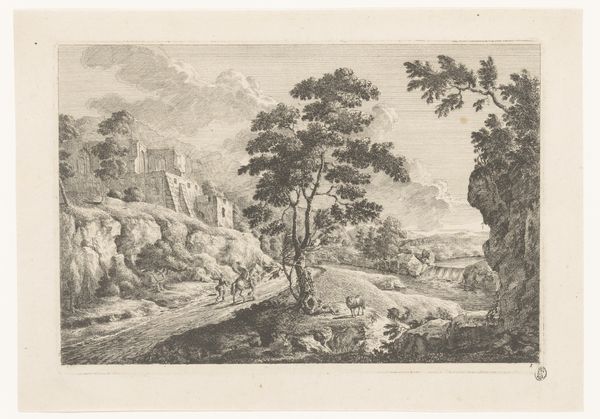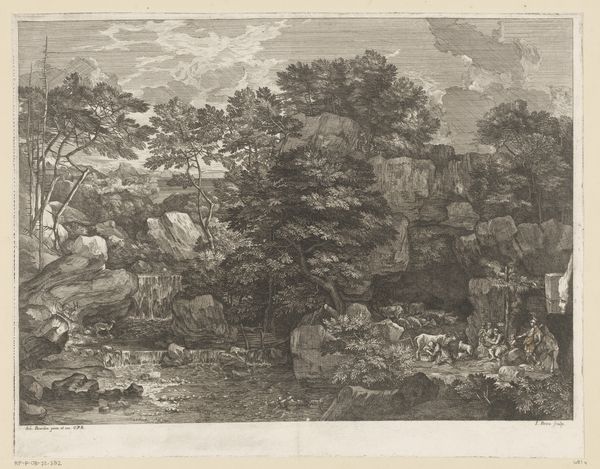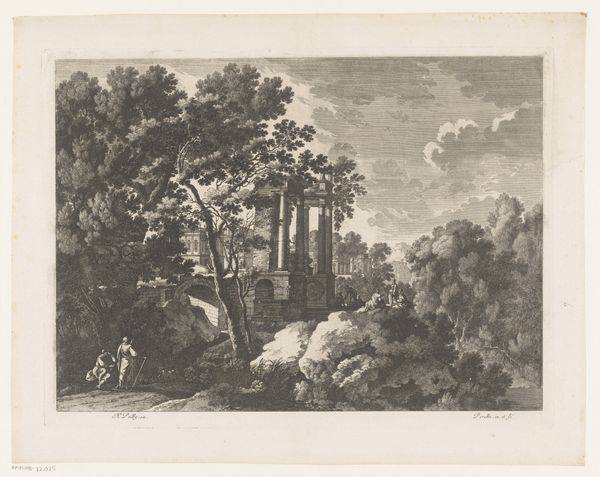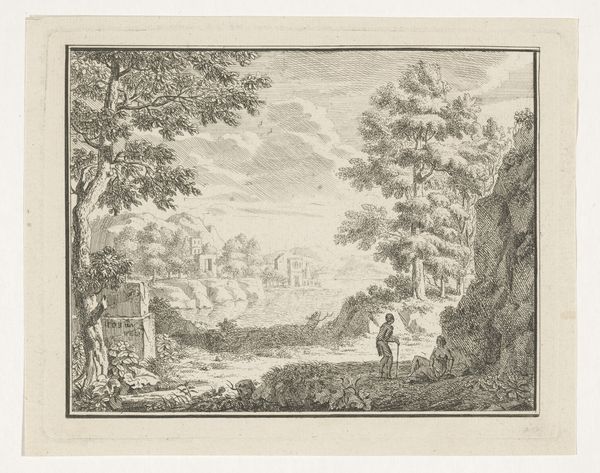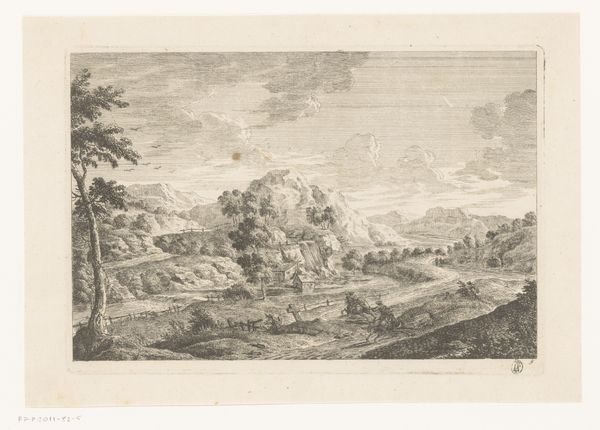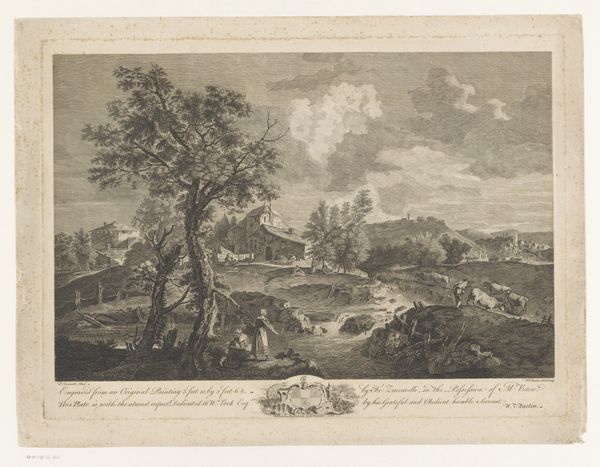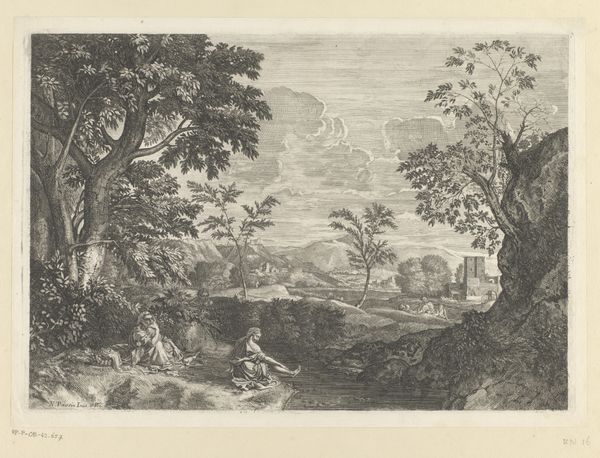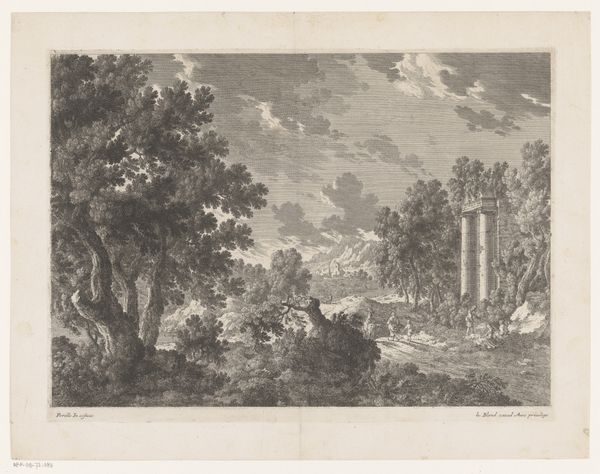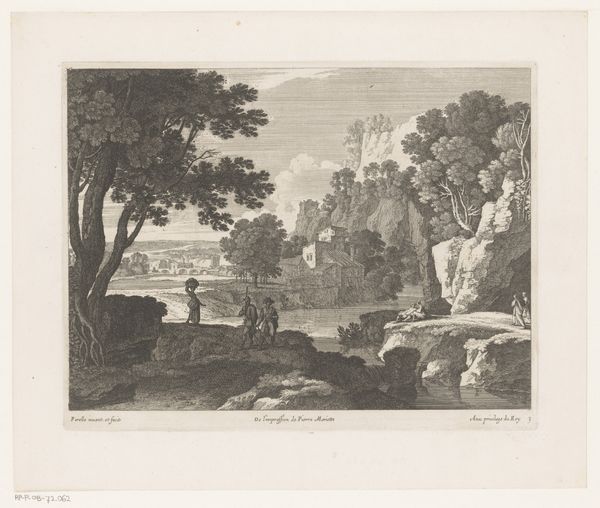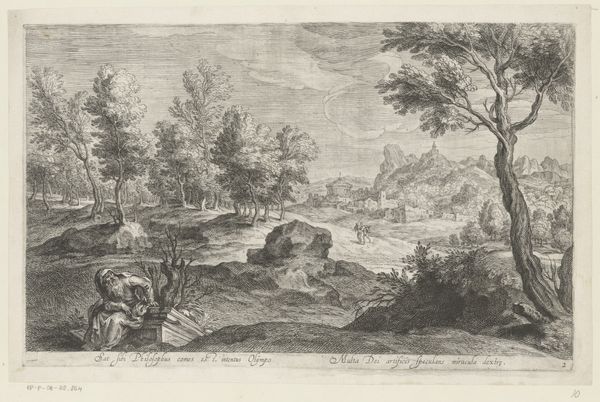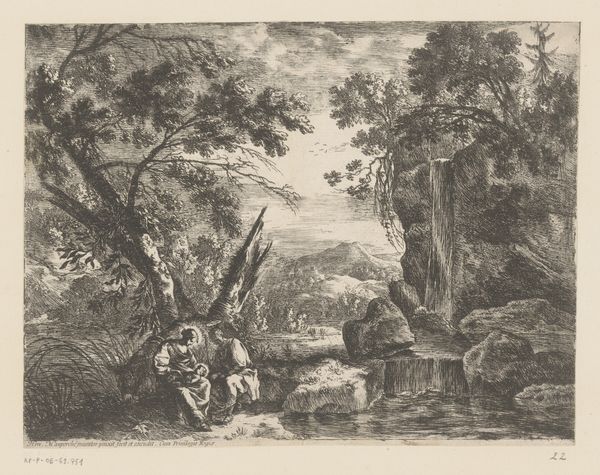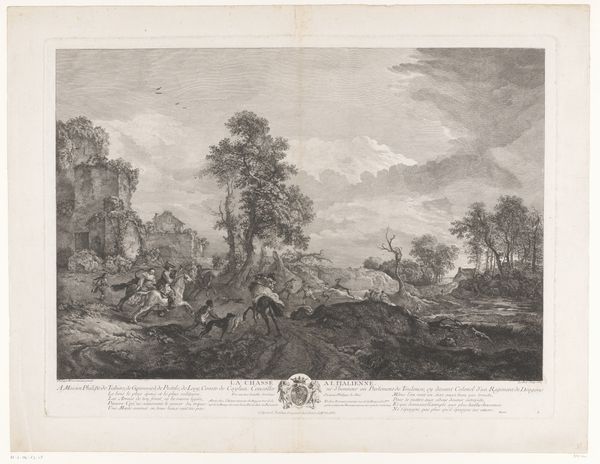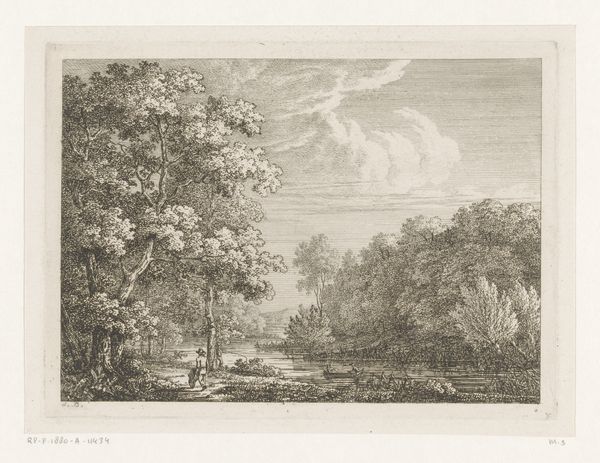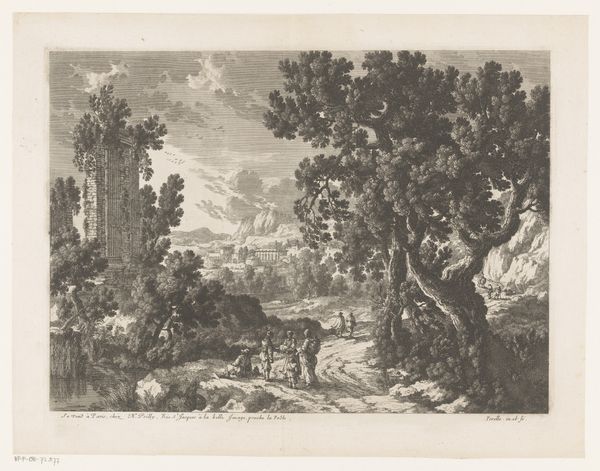
drawing, print, etching
#
drawing
# print
#
etching
#
landscape
#
etching
#
romanticism
#
watercolor
Dimensions: height 254 mm, width 360 mm
Copyright: Rijks Museum: Open Domain
Curator: Immediately, I'm struck by the almost photographic quality of this landscape, particularly the stark contrast between light and shadow. It possesses a melancholy air, doesn't it? Editor: Yes, indeed. We're looking at "Italiaans landschap," or "Italian Landscape," a print by Joseph Rebell. This etching, likely created between 1807 and 1828, offers an interesting glimpse into Romanticism’s interpretation of the Italian countryside. Curator: The layering here is just exquisite. See how Rebell uses variations in tone and texture to delineate the foreground, middle ground, and distance. It is reminiscent of Claude Lorrain's approach to structure, with balanced planes leading the eye inward. Editor: Speaking of structure, the composition positions humanity—those diminutive figures in the lower center—within a landscape dotted with ruins. There are strong societal implications here, aren’t there? What were the conditions in which such a nostalgic representation of an idyllic, decaying Italy was created? Curator: The placement of those human figures certainly echoes the period's preoccupation with the sublime and our relationship with an often overwhelming and imposing natural world. They provide scale. Editor: The etching captures more than aesthetic taste. Rebell’s work emerged within an Austrian empire hungry for depictions of Italy, newly accessible due to Napoleonic rearrangements. His landscape essentially performs a kind of cultural branding. Italy is presented as a place for sophisticated reflection—a picturesque memento for a very particular audience. Curator: A kind of commodity for contemplation, perhaps. Yet the formal sophistication transcends mere branding. Note the almost ghostly appearance of those classical structures in the distance, achieved through very precise tonal gradations. The etching’s power lies in that interplay. Editor: Absolutely, and acknowledging those layers gives us a richer appreciation. Thank you for pointing that out. Curator: My pleasure. Understanding its formal elements in relation to the Romantic era, with its societal needs, elevates this viewing experience to another level.
Comments
No comments
Be the first to comment and join the conversation on the ultimate creative platform.
